Lagos is the largest city in Nigeria, stretching from the Gulf of Guinea right across the Lagos Lagoon. In 1859 a small tract of land on Lagos Island was bequeathed by King Docemo of Lagos to the British Government principally for the recreation of the white settlers. It was on this land that the Lagos Racecourse was built, although this was only one of three designated uses of the land. The racecourse occupied the central part of the land, whilst to the south were cricket grounds nicknamed ‘Nigeria Oval’, while next to the cricket grounds there were football pitches. |
On 24th February 1882 races were held on Lagos Racecourse as a celebration of the massive African Steamships steamer Winnetah safely crossing the Lagos Bay, anchoring in the Lagoon. She was by far and away the largest steamer to accomplish this feat. |
| The two trophies shown below, courtesy of David Copland, were won by Hon G W Neville at Lagos racecourse in 1894 and 1895. G W Neville was president of the Lagos Chamber of Commerce, serving the local community, but returned to England aboard the Bakana in early December 1895. In January 1896 he attended a complimentary dinner at the Savoy Hotel, London, given in honour of Sir Augustus Hemming's in recognition of his services to West Africa. On a less dignified occasion, Hon G W Neville was Britain's representative in Benin City in March 1897 to acknowledge an earlier misdeed, a massacre of 300 natives, carried out by the British in the City.On 1st May 1930 the Illustrated London News reported the auction at Fosters, Pall Mall, London, of the Neville Collection formed by the late G W Neville. |
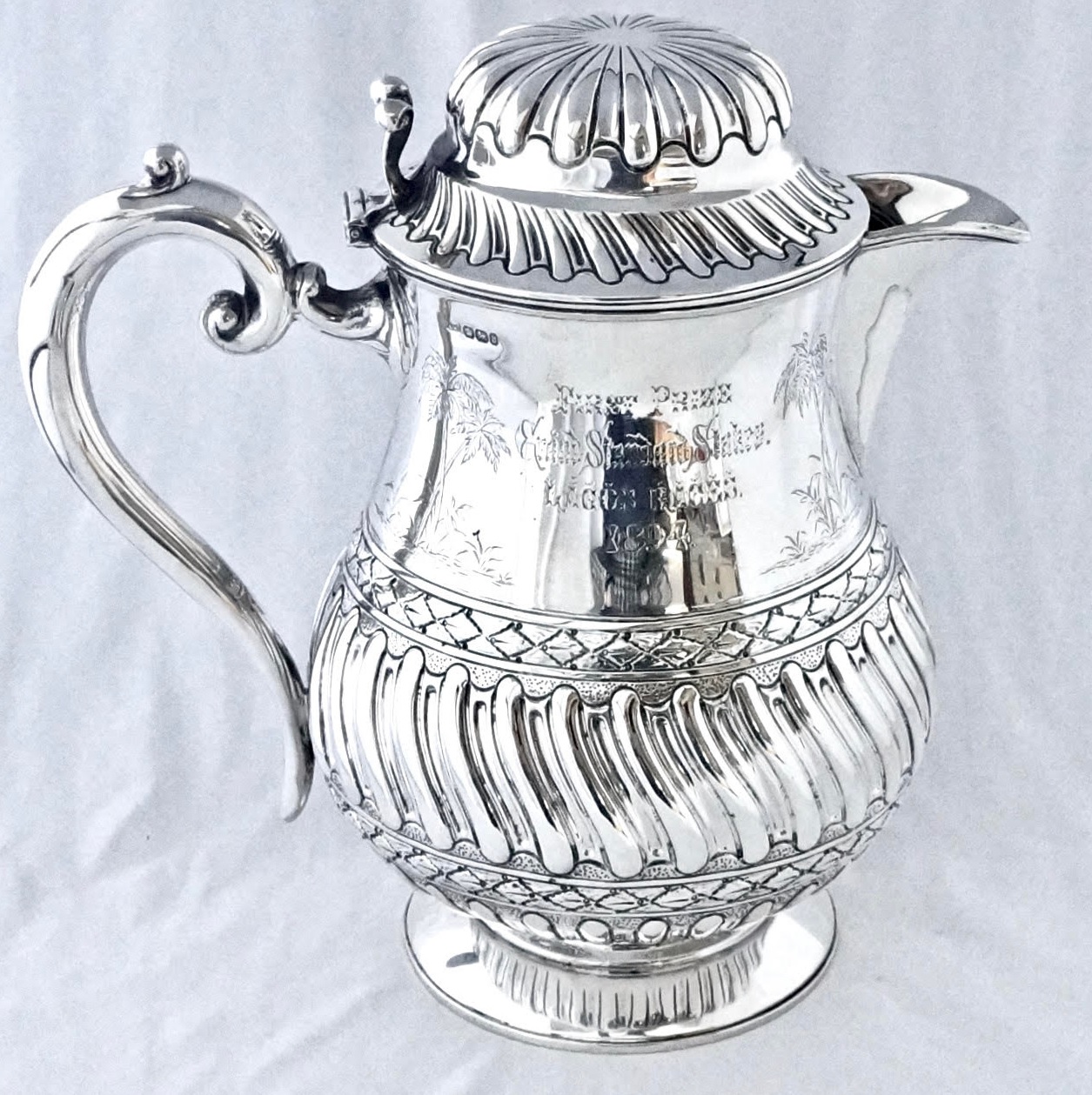 |
| First Prize Grand Standard Stakes, Lagos Races 1894 |
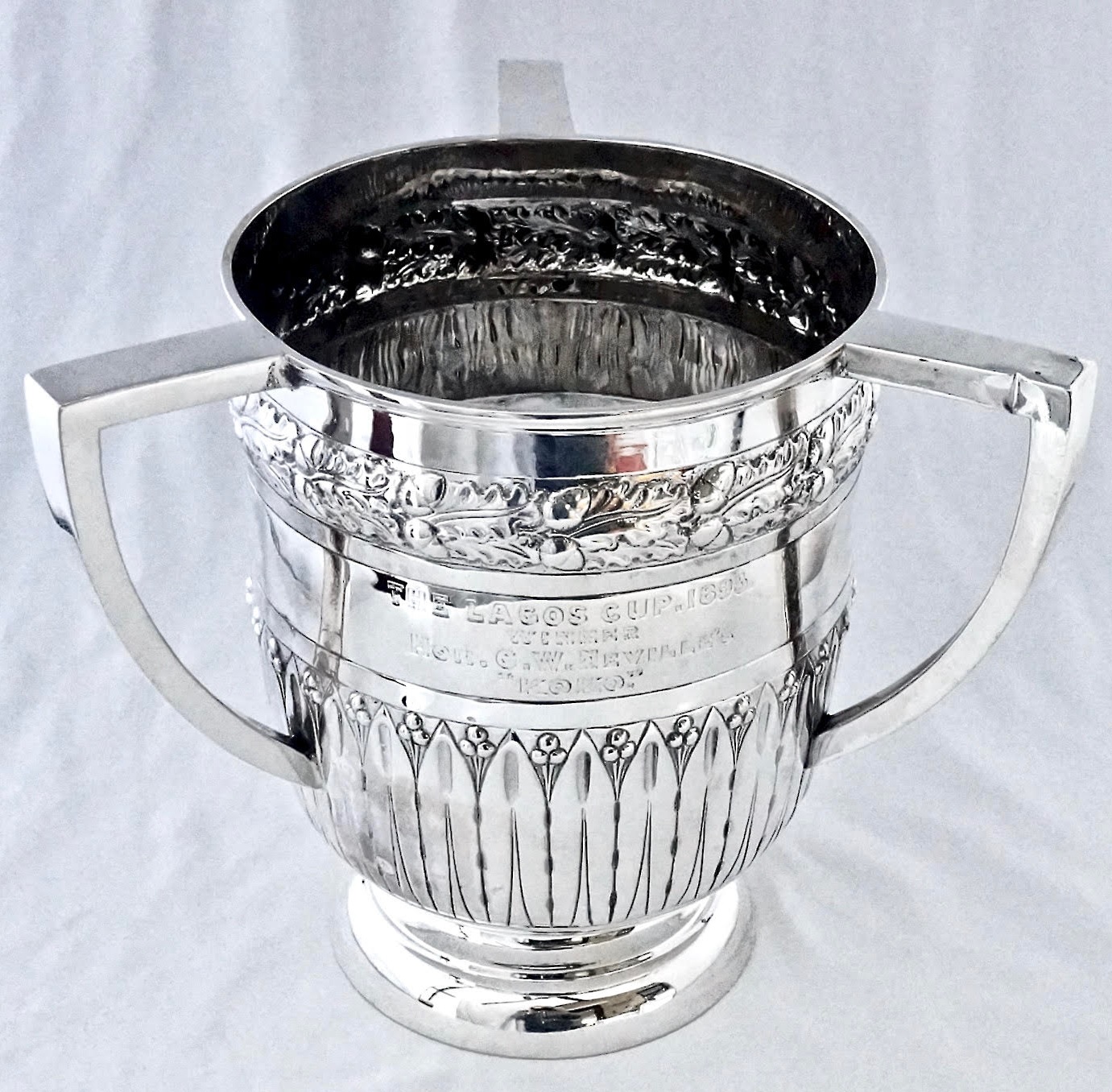 |
| The Lagos Cup 1895, won by Honourable G W Neville's Koko |
| I am grateful to David Copland for the scans of the extremely rare trophy shown to the right. It was contested at the Prince of Wales Meeting held at Easter 1925, and was awarded to the owner of Prophet, winner of the Lagos Race Club Plate. The meeting was organised to coincide with the visit of the future King Edward VIII, although he did not become King for almost 11 more years on 20th January 1936, and by 11th December 1936 he had abdicated. |
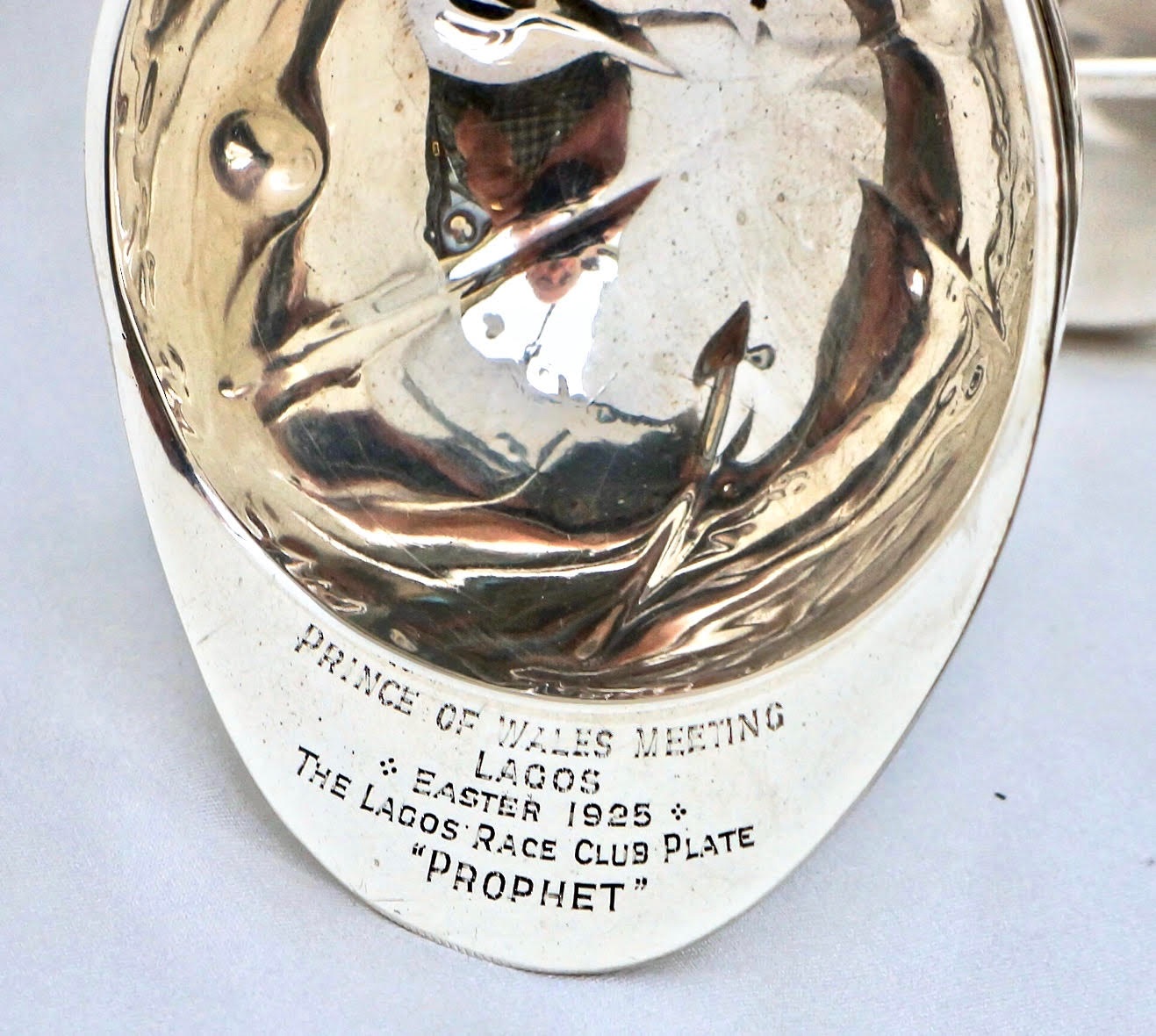 |
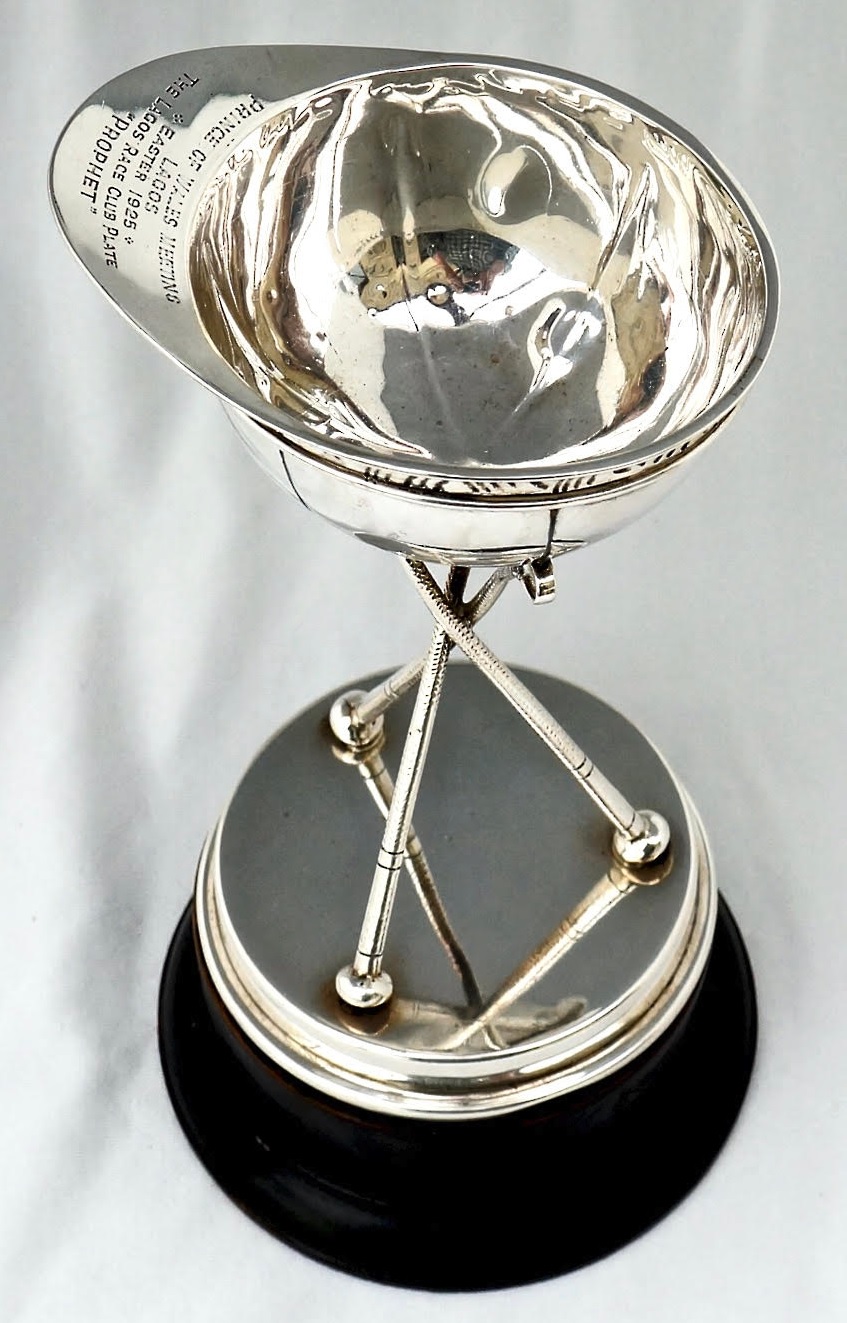 |
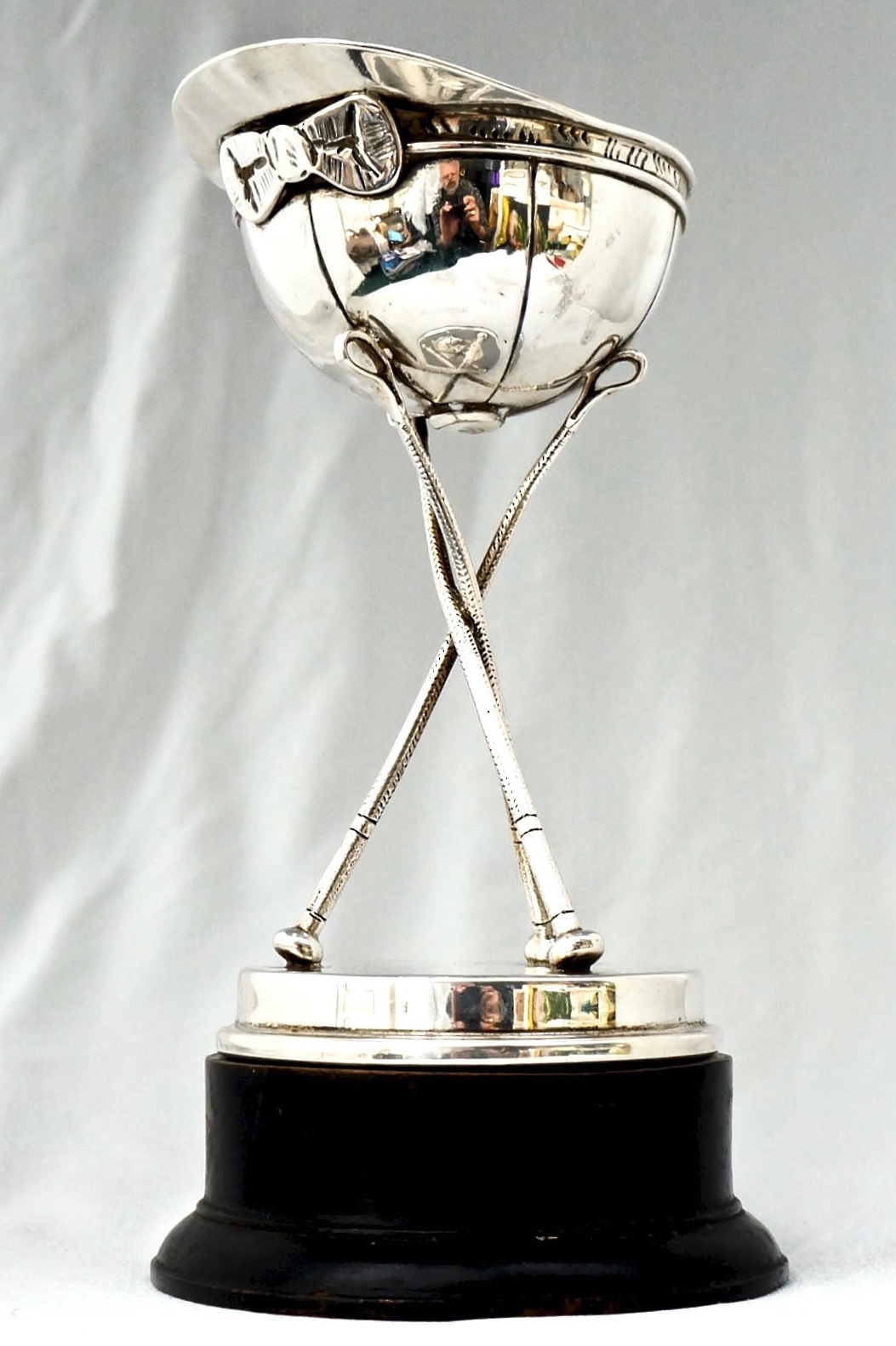 |
The racecourse was still operational in the late 1950’s, as evidenced by the 1955 Stewards badge shown below, and by the fact that a group of 6 Nigerian Dancers, wearing feathered head dresses, performed on the racecourse in front of the Queen and Duke of Edinburgh on their royal tour of Nigeria in February 1956. However, by 1972 the racecourse had certainly closed and the 35.8 acre site became the ceremonial ground called Tafawa Balewa Square.
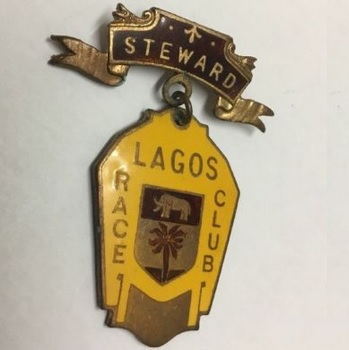 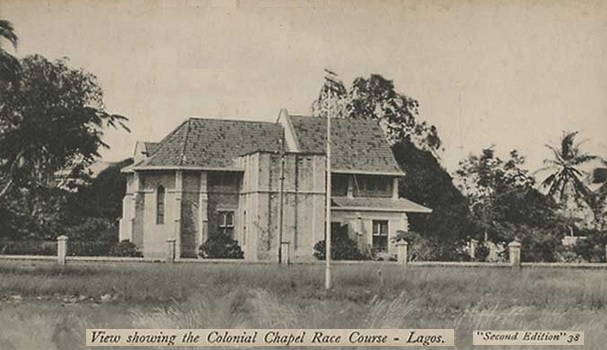
|
In June 1956 more than 30,000 people crammed into the horseshoe shaped Lagos Racecourse to witness Queen Elizabeth II present new colours to the Nigerian Regiment. |
The Racecourse, being such a large area, was used frequently for important occasions. In mid-November 1960 representatives of more than 30 African countries attended the racecourse, along with a crowd in excess of 70,000, for the inauguration of Dr Nnamdi Azikiwe as governor-General of Nigeria, the first African Governor-General in the Commonwealth. |
| Course today |
The racecourse had closed by the late 1960s. |
| If you have photos, postcards, racecards. badges, newspaper cuttings or book references about the old course, or can provide a photo of how the ground on which the old racecourse stood looks today, then email johnwslusar@gmail.com |
 |
 |
 |
 |
ISBN 978-0-9957632-0-3
652 pages
774 former courses |
ISBN 978-0-9957632-1-0
352 pages
400 former courses |
ISBN 978-0-9957632-2-7
180 pages
140 former courses |
ISBN 978-0-9957632-3-4
264 pages
235 former courses |
| Copies of the above books are only available by emailing johnwslusar@gmail.com stating your requirements, method of payment (cheque payable to W.Slusar) or Bank transfer, and the address where the book(s) should be sent. |
| ORDER FORM |
| Download an order form |
| |
Quantity |
Cost |
| Volume 1 North of Hatfield £19.99 + £4 postage |
|
|
| Volume 2 South of Hatfield £14.99 + £3 postage |
|
|
| Volume 3 Wales & Scotland £9.99 + £3 postage |
|
|
| Volume 4 Ireland £9.99 + £3 postage |
|
|
| Volumes 1 - 4 £54.96 + £5 postage |
|
|
| Postage & Packaging |
|
|
| Total |
|
|
| Email order form to johnwslusar@gmail.com |
|










